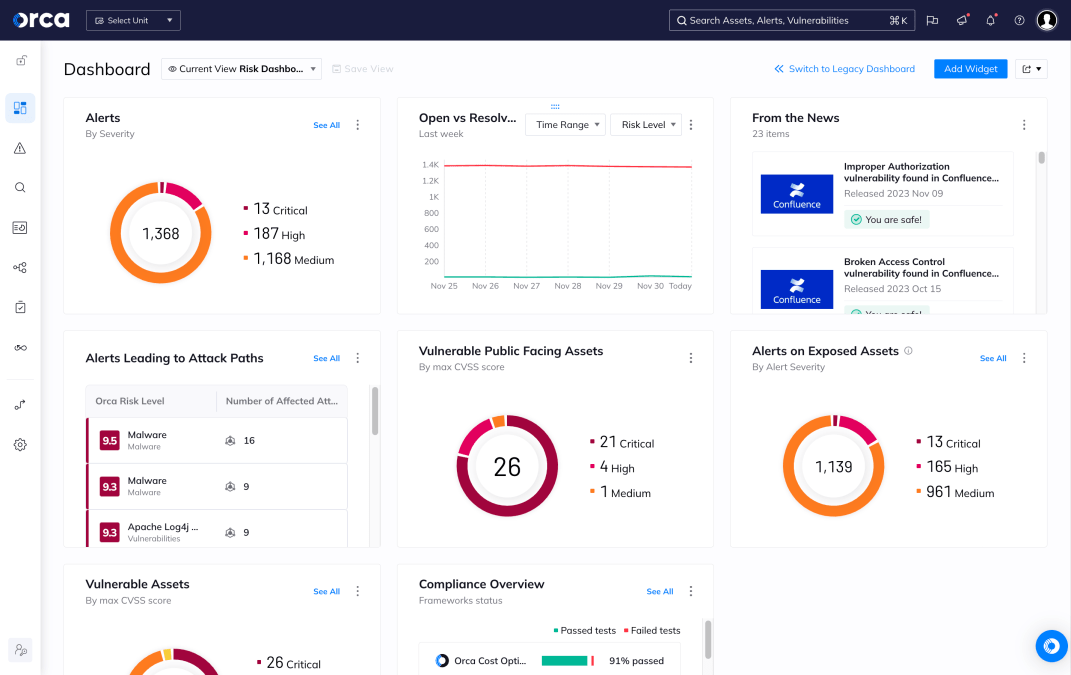Risk exposure is the potential financial, operational, or reputational loss an organization faces from identified security vulnerabilities, misconfigurations, and threats across its digital infrastructure. In cloud security, risk exposure represents the measurable impact that could result from successful exploitation of security weaknesses within cloud environments, applications, and data stores. Unlike theoretical risk assessments, risk exposure focuses on quantifying actual vulnerabilities present in an organization’s current security posture and their potential business consequences.
Why is it important?
Understanding risk exposure is critical for organizations to make informed decisions about security investments and prioritize remediation efforts effectively. As cloud adoption accelerates, the attack surface expands exponentially, creating numerous potential entry points for malicious actors. Without clear visibility into risk exposure, security teams struggle to distinguish between high-impact vulnerabilities requiring immediate attention and lower-priority issues that can be addressed over time.
Risk exposure directly impacts compliance requirements, cyber insurance premiums, and business continuity planning. Organizations with comprehensive risk exposure assessments can demonstrate due diligence to regulators, negotiate better insurance terms, and allocate security resources more strategically. Effective risk management requires organizations to understand their current risk exposure levels and implement appropriate controls based on potential impact.
How does it work?
Risk exposure assessment involves several interconnected processes that continuously evaluate an organization’s security posture:
- Asset discovery: Security teams identify all cloud resources, applications, databases, and services within their environment.
- Vulnerability scanning: Tools assess these assets for known vulnerabilities, misconfigurations, and compliance gaps.
- Threat intelligence correlation: Insights into active exploits help determine which vulnerabilities pose the highest likelihood of attack.
- Risk scoring: Algorithms calculate exposure based on severity, asset criticality, data sensitivity, and exploitability.
- Continuous monitoring: Systems track configuration drift, infrastructure changes, and emerging threats in real time.
For example, a high-severity vulnerability affecting a publicly accessible cloud database containing sensitive customer data would be assigned a high risk exposure score due to the potential impact and accessibility of the asset.
Security risks and challenges
Managing risk exposure is complex due to the size and dynamism of modern cloud environments:
- Asset sprawl: Hundreds or thousands of cloud resources may be deployed across multiple regions and providers.
- Cloud-native complexity: Serverless functions, containers, and microservices introduce ephemeral workloads and new security blind spots.
- Misconfigurations: Public S3 buckets, unrestricted IAM roles, and exposed APIs are common causes of elevated risk exposure.
- Alert fatigue: Security teams face an overwhelming number of alerts, making it hard to focus on what truly matters.
- Visibility gaps: Many tools lack full-stack awareness, preventing accurate calculation of exposure.
Misconfigurations and insufficient visibility are among the most common causes of successful cloud breaches. Organizations must overcome these challenges to effectively reduce their exposure.
Best practices and mitigation strategies
Reducing risk exposure requires a proactive and structured approach:
- Establish baselines: Define normal operating parameters and acceptable exposure levels.
- Automate scanning: Use continuous vulnerability management tools to ensure comprehensive coverage.
- Prioritize based on impact: Focus remediation on high-risk assets, especially those with internet exposure or sensitive data.
- Integrate into DevSecOps: Incorporate scanning into CI/CD pipelines and validate infrastructure as code (IaC) configurations.
- Define thresholds and alerts: Automatically notify teams when exposure exceeds defined limits.
- Regular risk reviews: Reassess risk exposure after major infrastructure changes or new threat intelligence.
- Train teams: Educate stakeholders on interpreting risk exposure metrics and aligning security efforts accordingly.
Organizations should use structured frameworks like NIST CSF and CIS Controls to guide their exposure reduction strategies.
How Orca Security helps
The Orca Cloud Security Platform enhances cloud security effectiveness across the multi-cloud environments of AWS, Azure, Google Cloud, Oracle Cloud, Alibaba Cloud, and Kubernetes. With Orca, security teams get:
- Full coverage: Orca discovers and inventories all cloud resources across your multi-cloud estate
- Comprehensive detection: Orca detects all types of cloud risks, including vulnerabilities, misconfigurations, API risks, IAM risks, AI risks, sensitive data exposure, and more
- Risk prioritization: Orca analyzes risks holistically, contextually, and dynamically to prioritize the risks that matter most
- Unified security: Orca offers visibility and capabilities that secure the entire application lifecycle, from pre-deployment through runtime
- Multi-cloud compliance: Orca automates compliance by automatically mapping cloud resources and risks to more than 185 built-in regulatory and industry frameworks, streamlining documentation and compliance validation
- Bidirectional integrations: Orca integrates security intelligence with popular ticketing, source code management, security, and productivity platforms to enhance your existing workflows and tools
By unifying security across your organization, the Orca Platform enables you to remediate risks and protect against sophisticated threats.



